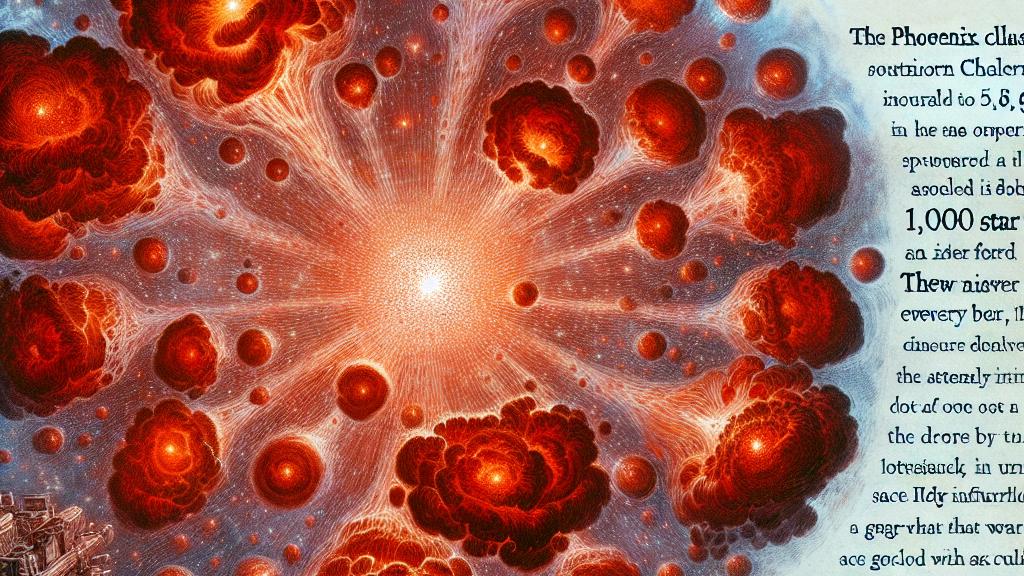Discovering the Phoenix Galaxy Cluster's Surprising Star Formation
Overview
- The Phoenix galaxy cluster defies traditional astrophysical expectations spectacularly.
- Recent findings reveal an exceptional rate of star formation that is rarely seen in older galaxy clusters.
- By utilizing NASA's JWST, scientists have unlocked groundbreaking insights into the cooling processes that sustain this prolific star creation.

A Star-Generating Mystery in the Phoenix Cluster
Enveloped in the vastness of space, about 5.8 billion light-years away lies the extraordinary Phoenix Cluster, nestled within the southern constellation Phoenix. This fascinating cluster challenges what we know about astronomical evolution; it’s supposed to be 'red and dead,' yet it glows with incredible energy! How can this be? To the amazement of astronomers, the core emits the light of approximately 1,000 new stars every year—a rate that is mind-blowing compared to the mere one star typically born in an average galaxy cluster. This striking revelation emerged from meticulous research conducted by a team at MIT, who harnessed the power of NASA's James Webb Space Telescope (JWST). With its unparalleled infrared capabilities, the JWST illuminated regions of 'warm' gas, hinting at an exciting and vigorous starburst activity. Such findings leave the scientific community buzzing with questions and wonder.
Understanding the Cooling Mechanism
What makes the Phoenix Cluster so distinct from its cosmic peers? The key lies in the groundbreaking discovery of warm gas, which indicates an unusual cooling mechanism actively fueling star formation. Typically, in younger galaxies, dense and cold clouds of interstellar gas serve as the primary ingredients for creating stars. Yet, in the case of the Phoenix Cluster, scientists have uncovered a captivating twist: warm gas is chilling down and morphing into the essential elements required for star creation. Astonishingly, researchers have observed a cooling flow rate that surges to an unprecedented 3,280 solar masses each year! This remarkable observation raises a pivotal question: why does the supermassive black hole at the core, usually a suppressor of star formation, appear to be allowing this remarkable burst of activity instead? It's a paradox that continues to entice astronomers with its mysteries.
The Future of Cluster Studies
Could the enchanting Phoenix Cluster serve as a key to unraveling the cosmic behaviors of other galaxy clusters? If indeed each cluster experiences a spell of rapid star formation, what profound insights might we glean about the evolution of galaxies? Armed with cutting-edge technology like the JWST, eager astronomers like Michael McDonald strive to dive deeper into these celestial phenomena. By scrutinizing the Phoenix Cluster, they are able to amass invaluable data, drawing fascinating comparisons with other galactic clusters. This pursuit not only expands our understanding but also propels exhilarating questions: What unique developmental patterns do clusters exhibit throughout the universe? How do diverse cosmic conditions impact their star formation rates? With every incremental discovery, the grand universe continues to unveil an intricately woven tapestry of cosmic complexity that captivates and inspires us all.

Loading...